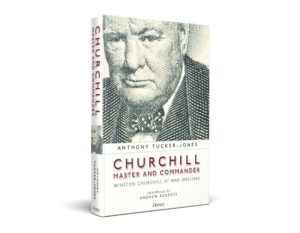Finest Hour 177
Books, Arts & Curiosities – Dirty Tricks

October 18, 2017
Finest Hour 177, Summer 2017
Page 57
Review by Leon J. Waszak
Giles Milton, Churchill’s Ministry of Ungentlemanly Warfare: The Mavericks Who Plotted Hitler’s Defeat, Picador, 2017, 368 pages, $28.00. ISBN 978–1250119025
At the start of his book, Giles Milton, a renown British journalist and author, appropriately quotes from the famous Second World War film The Life and Death of Colonel Blimp: “Clive, my dear fellow, this is not a gentleman’s war. This is a life-and-death struggle. You are fighting for your very existence against the most devilish idea ever created by a human brain—Nazism. And if you lose there won’t be a return match next year, perhaps not even for a hundred years!”
Morality aside, fighting a war to a successful conclusion against a determined enemy such as Nazi Germany, was never going to be anything but a difficult and dirty business. Sometimes it required extraordinary means to achieve the ends desired, but one always remained cognizant of the enemy’s capacity to do worse. In the final analysis, the parameters of the conflict, in terms of morality, had already been breached by Hitler’s legions, as they cut a path of destruction and genocide through Europe. Winston Churchill recognized that war’s tactics involved more than moving a few division markers across the maps within the Cabinet War Rooms. He understood that to bring Hitler to heel he needed to use whatever offbeat methods and tactics could be invented (or dreamed up) to achieve this end; hence the so-called “Ministry of Ungentlemanly Warfare.”
The subject has been examined before, most notably in 1967 by E. H. Cookridge in Set Europe Ablaze, but Milton is helped by the release of the remaining files of the SOE (Special Operations Executive) during the late 1990s. Contained within the pages of this new book are often forgotten (or previously suppressed as top secret) exploits of professional spies, secret agents, and saboteurs mixed in with eccentrics and gifted amateurs, who made war by engaging in outsidethe-box thinking. Milton’s engaging style also makes his version more accessible to the general reader than academic works on the subject, but he has also done his homework, having researched in many archives.
We learn from Milton that Churchill actually hand-picked many of the “mavericks” who engaged in special operations behind enemy lines, using all the tricks of the trade (and inventing some new ones along the way), with all the ruthlessness and dirty tactics that the more squeamish would abhor. Yet such tactics and methods are credited with shortening the war. Churchill admired all sorts of innovation and was a practitioner himself (the idea of the battle tank during the First World War being just one of many such examples).
In the Second World War, Churchill embraced some unlikely characters, including William Fairborn and Cecil Clarke. Fairborn was an overweight, retired citizen hired on to train guerrillas because he was considered the foremost expert on “silent killing.” Clarke (who was known for futurist design) developed the “dirty bomb” used in the assassination of the dreaded Reinhard Heydrich. And, it wasn’t just a man’s war, as one reads about the many talented women who contributed to the cause. One good example was a woman in her twenties, Joan Bright, who turned down a job as governess to Rudolph Hess’s children to run the “Ministry’s” Caxton Street office, where she became the lynchpin in some guerrilla war activities.
Leon J. Waszak teaches at Cerritos College and is author of Agreement in Principle: The Wartime Partnership of Wladyslaw Sikorski and Winston Churchill (1996).
Subscribe
WANT MORE?
Get the Churchill Bulletin delivered to your inbox once a month.






